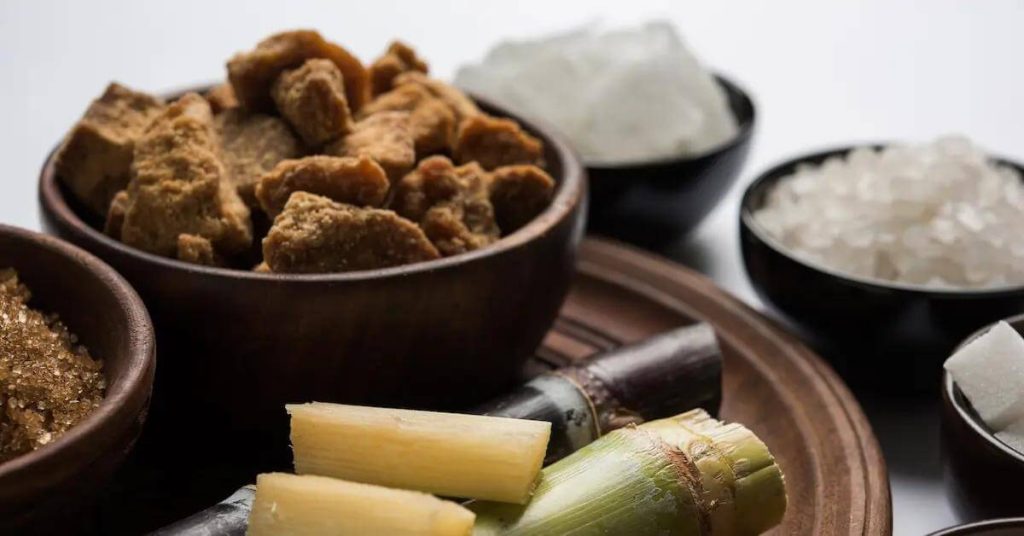Cane Sugar Processing: Secret Technologies for Superior Sugar Production
Cane Sugar Processing: Secret Technologies for Superior Sugar Production
Blog Article
A Thorough Overview to the Environmental Influence and Sustainability Practices in Walking Cane Sugar Handling
The ecological impact of walking cane sugar processing presents a complicated range of difficulties that warrant cautious exam. From soil deterioration and too much water usage to the carbon footprint linked with farming and manufacturing, the consequences of traditional practices are far-reaching. What specific methods can be applied to strike a balance in between efficiency and environmental stewardship?
Summary of Walking Cane Sugar Processing
Cane sugar processing involves a series of methodical steps that change sugarcane into polished sugar. At first, harvested sugarcane is moved to processing centers, where it undergoes cleaning to get rid of soil and debris. Following this, the walking stick is crushed to extract juice, which is after that made clear by removing pollutants through home heating and the enhancement of lime.
The made clear juice undertakes dissipation, where water is gotten rid of to focus the sugar material. These crystals are divided from the staying syrup utilizing centrifugation, resulting in raw sugar.
The end product is after that dried out and packaged for circulation. Throughout this entire process, maintaining performance and high quality control is essential to guarantee the sugar satisfies market standards. Each step in cane sugar handling not only adds to the final product however likewise has ramifications for resource use and waste generation, establishing the stage for discussions on sustainability and environmental influences linked with sugar production.
Ecological Challenges of Production
The manufacturing of cane sugar presents numerous significant environmental challenges that warrant focus. One key worry is the comprehensive use agrochemicals, consisting of fertilizers and pesticides, which can bring about dirt degradation, biodiversity loss, and contamination of local water sources. The drainage from sugarcane fields commonly carries these chemicals right into nearby communities, interrupting aquatic life and influencing the health of areas reliant on these water bodies.
One more difficulty is the high energy intake connected with sugarcane handling. The boiling and refining stages call for considerable warm, mainly generated by burning fossil gas, adding to greenhouse gas emissions. Additionally, the large acreage needed for sugarcane cultivation can bring about logging and environment destruction, further worsening climate change and harmful wild animals.
Furthermore, the labor practices in some areas raise ethical worries, as workers might face bad working conditions and poor salaries. This scenario commonly bolsters a cycle of hardship in neighborhood areas. Cane Sugar Processing. Resolving these ecological challenges is important for establishing more sustainable practices in cane sugar production, ultimately profiting both the atmosphere and the neighborhoods associated with this industry
Water and Land Use Impact
Water resources and land utilization are crucial parts in the walking cane sugar sector that significantly influence the setting. The growing of sugarcane calls for significant water input, with price quotes suggesting that it can eat as much as 2,000 liters of water per kilogram of sugar produced. This extensive usage of water usually causes deficiency of neighborhood water sources, impacting not just the sugarcane ranches but also surrounding environments and communities that depend on the very same water sources for farming and domestic usage.

Additionally, land usage for sugarcane cultivation can lead to logging and the conversion of all-natural habitats into monoculture ranches. This practice diminishes biodiversity, interferes with neighborhood environments, and contributes to dirt destruction. The expansion of sugarcane fields often intrudes on valuable farming land, developing competitors for sources between food and biofuel manufacturing.
Sustainable practices, such as maximizing irrigation techniques and executing crop turning, are vital to mitigate these influences. By taking on a lot more reliable water usage and land management approaches, the cane sugar industry can lower its environmental footprint, ensuring a balance in between agricultural productivity and ecological preservation.
Greenhouse Gas Emissions
Greenhouse gas emissions represent a substantial environmental worry within the walking stick sugar processing market, particularly as agricultural visit here techniques increase to fulfill international demand. The cultivation of sugarcane, a plant that grows in tropical environments, counts greatly on synthetic plant foods and pesticides, which add to laughing gas discharges. Additionally, land-use modifications, consisting of logging for brand-new sugarcane haciendas, release co2 stored in greenery and soil.
During handling, energy consumption is an additional significant resource of greenhouse gas exhausts - Cane Sugar Processing. Numerous sugar mills use fossil gas to power equipment and create warmth, causing considerable carbon impacts. Furthermore, the transportation of raw sugarcane and completed items adds layers of emissions through fuel burning in automobiles
This entails evaluating present agricultural methods, refining methods, and transport systems to determine areas for enhancement and mitigation. Attending to greenhouse gas exhausts is crucial for fostering a much more lasting walking stick sugar sector in an altering climate.

Sustainable Practices and Innovations
Sustainable methods and advancements are significantly vital in the walking cane sugar processing industry as stakeholders seek to decrease ecological impacts while maintaining performance. One substantial development is the execution of incorporated plant monitoring, which enhances source use by integrating dirt administration, pest control, and crop turning methods. This method enhances yield while minimizing chemical inputs and protecting soil health.
Moreover, the fostering of eco-friendly power resources, such as biomass from sugarcane residues, has gained grip - Cane Sugar Processing. By transforming waste items right into power, processing facilities can minimize their reliance on fossil fuels, therefore lowering greenhouse gas exhausts
Water monitoring methods have additionally seen improvements with the recycling and reusing of water in processing plants, substantially reducing freshwater consumption. Advancements in modern technology, such as precision agriculture, enable farmers to check plant wellness and source usage extra more information successfully, making certain lasting cultivation techniques.
Furthermore, qualification programs like Fair Profession and Rain forest Partnership motivate ecologically liable farming methods and advertise social equity within the supply chain. By accepting these sustainable methods and technologies, the cane sugar processing industry can boost its resilience and add positively to ecological stewardship.
Verdict
The environmental effect of walking cane sugar processing provides significant challenges, including soil degradation, high water usage, and greenhouse gas emissions, along with ethical concerns associated to labor practices. Dealing with these concerns through sustainable methods, such as incorporated plant management, renewable resource fostering, and water recycling, is crucial. By advertising eco liable and socially fair methods in sugar manufacturing, the sector can alleviate its unfavorable impacts, making sure an extra lasting future for both environments and neighborhoods associated with this field.
Walking cane sugar processing includes a collection of methodical actions that transform sugarcane into refined sugar. Each step in walking stick sugar processing not only contributes to the last item yet additionally has effects for resource use and waste generation, establishing the stage for conversations on sustainability and environmental influences connected with sugar production.
Greenhouse gas emissions stand for a substantial ecological worry within the cane sugar handling sector, especially as farming methods increase to satisfy international need.Sustainable methods and technologies are significantly essential in the walking stick sugar processing market as stakeholders seek to lower environmental impacts while keeping performance.The ecological impact of walking cane sugar handling offers significant obstacles, including dirt deterioration, high water consumption, and greenhouse gas weblink emissions, together with moral problems related to labor practices.
Report this page